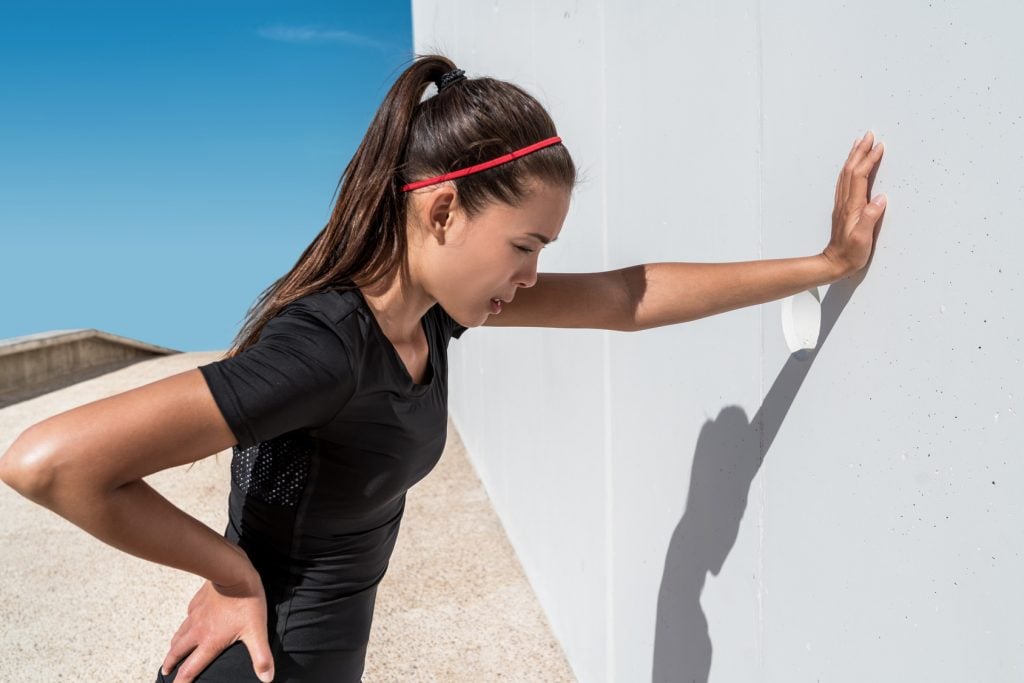If you’re looking to enhance your running form and efficiency, focusing on shortening your stride length is a great place to start.
Here’s the reality: optimizing your running form involves a thorough understanding of your stride length and its impact on your performance. Overstriding, a common mistake where your foot lands too far ahead of your hips during each stride, can cause extra stress on your body and create a braking effect that hinders your running efficiency.
To address this issue and refine your running technique, shortening your stride is essential. There’s simply no other way around it.
In this article, I’m going to explore the process of shortening your running stride. By doing this, you’ll improve your running efficiency, reduce the risk of injury, and enhance your overall performance.
The Power of the Stride:
Your running stride is much more than just a sequence of steps; it’s a crucial element for enhancing your running form. The length of each stride plays a significant role in your speed, efficiency, and overall physical well-being. So, if you’re dedicated to improving your running performance, paying attention to and adjusting your stride length is a crucial step.
Opting to overstride, which means taking longer strides to cover more ground, can actually be counterproductive. It negatively impacts your running efficiency. Given that running is already a high-impact activity, additional stress is the last thing you need. Imagine this: with longer strides, your leg tends to extend straight at the knee, causing your foot to land well ahead of your body. This can effectively act like a brake on your speed, which is definitely not desirable.
The solution? Focus on shortening your stride. This simple adjustment can work wonders. Shorter strides help prevent that awkward foot landing. Moreover, research indicates that shorter, quicker strides can reduce the impact on your joints and muscles. This results in a more comfortable run and gives your body a respite from the stress caused by longer strides.
The Power of A Short Stride
Let’s dive into the world of short strides and discover why they’re a game-changer for your running experience.
Enhanced Efficiency:
Think of your stride as a well-tuned machine, effortlessly propelling you forward with every step. Shortening your stride fine-tunes this machine, bringing about enhanced efficiency in a few key ways:
Reduced Energy Expenditure:
A shorter stride means your body expends less energy per step. Rather than pushing your muscles and joints to their limits, you’re working in harmony with them. This energy-saving approach allows you to reserve your stamina for longer and more effective runs. Who doesn’t love a win-win situation?
Consistent Pace:
Shortening your stride promotes a more consistent running pace. Whether you’re a running novice or gearing up for a marathon, maintaining a steady speed becomes more achievable.
Improved Running Economy:
Running economy measures the oxygen consumed while running at a specific pace. Shortening your stride can enhance running economy, enabling you to sustain faster speeds with reduced oxygen consumption. This advantage holds true for both competitive athletes and casual runners.
Injury Prevention:
With a shorter stride, your foot gracefully lands under your body, avoiding the harsh impact of landing in front. This gentle touch down aids in better force absorption, making injury prevention a compelling reason to embrace a shorter stride.
Assessing Your Current Stride Length
Ready to dive into the nitty-gritty of reducing your stride length? Awesome! Let’s make it happen. First up, though, is figuring out where you stand right now. After all, you need a starting point to map your journey. Let’s break it down in a way that’s as straightforward as your favorite running route.
Self-Assessment: On your next run, tune into how your feet hit the ground. Feel the distance each stride covers. Are you stretching too far ahead? This quick self-assessment gives you a rough idea of your current stride length.
To pin down the exact number, follow this simple guide:
Step 1: Find a Flat Running Surface Pick a flat, open area for your run – a track, a quiet road, or any obstacle-free space. A consistent surface ensures you get the most accurate measurements.
Step 2: Warm-Up Kick things off with a solid warm-up. Jog for 5 minutes, throw in a few dynamic moves – get that body ready for action.
Step 3: Establish a Comfortable Running Pace Run at your usual, comfortable pace. The idea is to mirror your natural stride, so save any modifications for later.
Step 4: Focus on a Specific Leg Zoom in on one leg during your assessment. It simplifies the process and makes counting strides a breeze.
Step 5: Count Strides for One Minute While on the move, tally the times your chosen leg touches down in one minute. Count each landing or each full stride – your call.
Step 6: Multiply for Both Legs Double up the count to get the total strides for both legs. That’s your strides-per-minute magic number.
Step 7: Measure the Distance Covered Run for a set time (let’s say 10 minutes), mark the start and end, and measure the distance. GPS watch, a running app, or a good ol’ known distance – pick your method.
Step 8: Calculate Average Stride Length Divide the total distance by the number of strides. Boom! You’ve got the average stride length for one leg.
Video Analysis:
You can also take a video of your running stride. And it’s not just for social media – it’s a handy tool for analyzing your form. Record yourself running from the side to observe the length of your strides.
Use your smartphone or ask a friend to record a short clip. Watch it afterward to see if there’s overstriding or if your foot lands too far in front of your body. Be your own analyist.
Running on the treadmill? Here’s your guide to proper form.
Techniques To Shorten Your Stride
Okay, let’s get into the real talk about shortening that stride. The big secret? It’s all about tweaking your running cadence, and trust me, it’s not rocket science. Think of it like finding the perfect rhythm for your favorite dance move.
What’s Running Cadence Anyway?
Running cadence, or how fast your legs move, is just the number of steps you take in a single minute of running. The trick to fixing that overstride? Boosting up your cadence. No fancy shortcuts here, but it’s a real game-changer.
Experts like Jack Daniels (the running expert, not the whiskey) recommend a range of 170 to 180 steps per minute. But here’s the deal – cadence is personal, like your favorite running playlist. Some like it slow, some like it quick.
If you’re feeling a bit lost, shooting for that 170-180 zone is a good starting point. And for those overstriders – if you’re counting fewer than 170 steps, you might be stuck in the overstride zone with those long, infrequent steps.
Here’s how to check your cadence
Start with the basics – count your steps for a minute while going at your regular pace. Keep it simple with a metronome or a running app with a cadence feature.
Next? Try to increase your leg turnover by five percent chunks until you hit your ideal range. Let’s say you’re at 155 – aim for 159 or 160 steps per minute. Small steps lead to big wins!
Here’s how to do it effectively:
Running Form Tweaks for A Shorter Stride
Alright, let’s fine-tune those running strides for maximum efficiency. Here are some simple steps to make sure every step counts:
- Focus on Springing Off: Instead of trying to stretch your stride, focus on giving the ground a good push with each step. It’s all about a quick and powerful lift-off that propels you forward.
- Think Short, Light Strikes: Aim for shorter, lighter foot strikes. Steer clear of reaching too far ahead with your foot. Shortening your stride naturally encourages a faster cadence.
- Keep That Knee in Check: Your knee should be right above your foot as it hits the ground. This alignment keeps your shin vertical, reducing the risk of overstriding.
- Amp Up Leg Turnover for Speed: For a speed boost, work on increasing your leg turnover rate. Drive your leg back from the hips instead of reaching forward. A quicker cadence equals improved efficiency.
- Throw in Some Cadence Drills: Spice up your training routine with cadence drills. Run at a specific cadence (say, 180 steps per minute) to get the hang of it.
- Run to the Beat: Pick tunes with a tempo that matches your target cadence. Running to the beat helps maintain a steady rhythm.
- Embrace Interval Training: Interval training is your cadence buddy. Focus on running with a higher cadence during intervals while keeping that form in check.
- Get Feedback: Use a running watch or app for real-time cadence feedback. It’s like having a personal coach during your run.
- Pace It Right: Remember, your cadence may change with your pace. Easy jog, tempo run, or full-on sprint – variations are cool, but aim for efficiency at each pace.
- Practice Makes Perfect: Adjusting your stride might feel a bit odd at first, but it’s all about practice and patience. Start consciously shortening your stride during runs, and it’ll soon become second nature.
- Consistency is Key: Improving cadence is a journey, not a sprint (well, kind of). Be consistent, stay patient, and gradually let that snappy cadence become your signature move
Improving Stride Length with Targeted Exercises
Shortening your stride can be a game-changer in your running journey, but knowing how to do it effectively is key. Here, we provide you with practical guidance and exercises to help you improve your stride length:
High Knees Drill:
This drill encourages higher knee lift, which naturally leads to a shorter stride length.
Stand in place and march with exaggerated knee lifts, aiming to bring your knees up towards your chest with each step. Gradually increase the pace, mimicking a running motion.
Speed Bumps Visualization:
This mental exercise helps you visualize obstacles or “speed bumps” on your running path, encouraging shorter, quicker strides.
During your run, picture speed bumps in your mind. As you approach them, imagine lifting your knees higher and taking shorter, quicker steps to navigate the bumps efficiently.
Metronome Training:
A metronome helps you maintain a consistent cadence and stride length.
Set a metronome or use a metronome app to match your desired cadence. Start with your current cadence and gradually increase it over time. Focus on syncing your steps with the metronome’s beat.
Resistance Band Exercise:
Resistance band exercises strengthen the muscles needed for a shorter stride.
Attach a resistance band to a sturdy anchor point and loop it around your waist. Run against the resistance, forcing you to lift your knees higher and take shorter strides.
Downhill Sprints:
Running downhill naturally encourages shorter, faster strides.
Find a gentle downhill slope and perform short sprints, focusing on maintaining a quick cadence. Be cautious to avoid excessive downhill running, which can stress your knees.




